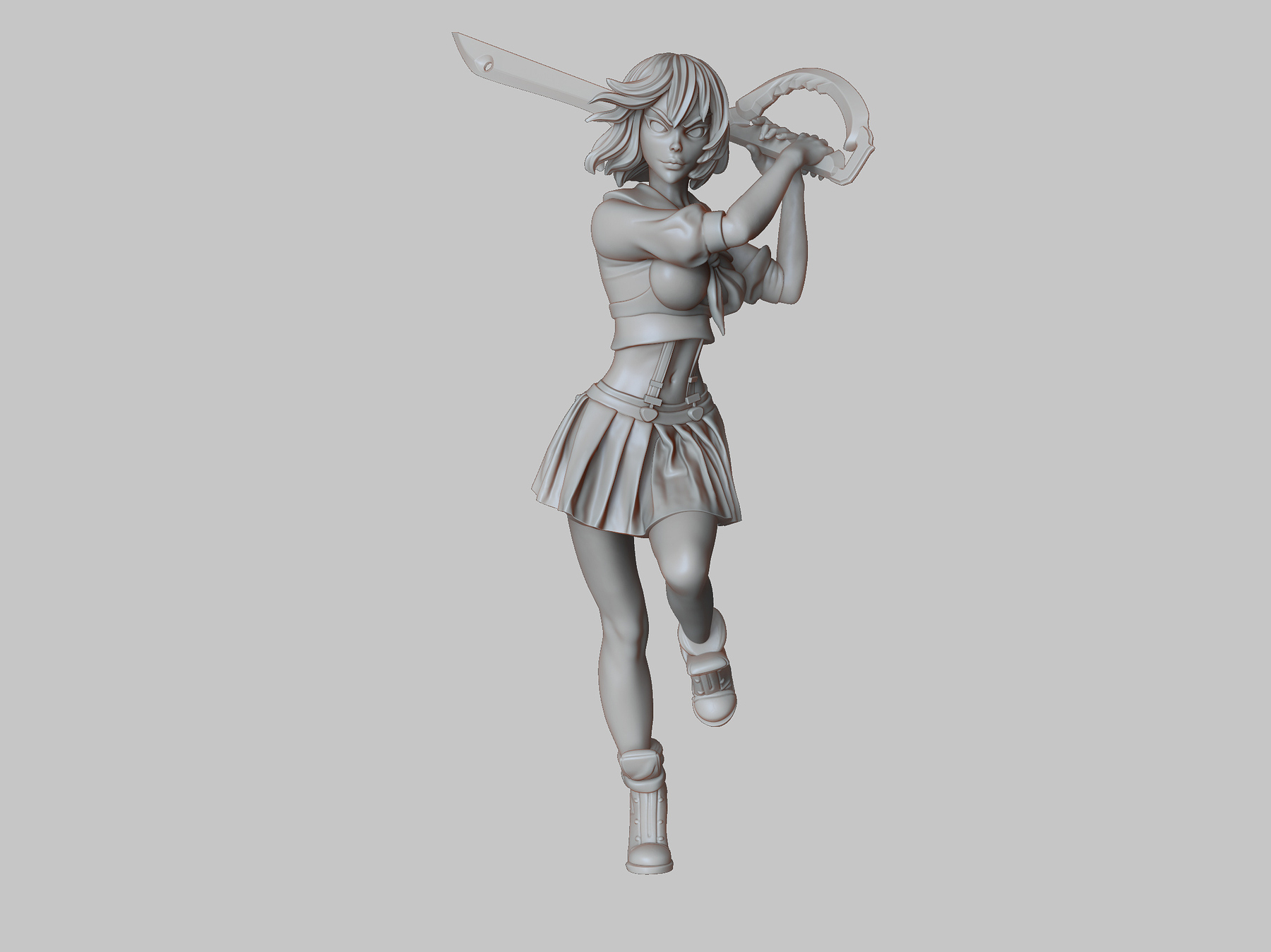
So don't rush, it will eventually come to you.Here we are again and welcome to another contest hosted by Phoenix Angels. In the end, it is the combination of each artist's experience and the art they follow and admire that affects their perspective about art and their style directly. This is the beauty of stylized art each artist can make their own style by using the works of people they admire as reference. This is just an example of different blockers you might encounter in your projects. That's the reason why I didn't detail those pieces at the beginning.
#Zbrush anime model how to
I created a separate scene with a test model to get used to the tool and once I felt more confident, I more or less understood how to tackle things like the jacket. So I checked some videos on how to pose characters in ZBrush and by watching the process, I got an idea about how to work around that. I was afraid everything I did might break and it'd be all for nothing. It was something new and I wasn't really sure about how to tackle it. In this project, my biggest challenge was actually posing the character in ZBrush. In each project, you will find new challenges that will lead you to improvement. Understand what makes the style you are working in, get some reference on previous work done by other artists, and identify what you like about them and especially what are its distinctive features. Otherwise, it would feel like you tried to create something entirely new and it might not work. But when you choose a certain style for your character, try to stick to it. You can have the same character interpreted in different styles and still be able to identify that character as such. When working on stylized art, you have the freedom to apply your own twist to it.

Things such as the design of her suit, the metal pieces of her feet, and her hairstyle became clear with further research. So I gathered as many images of the character in the Manga as I could to understand her proportions, shapes, colors and fill the holes where the sketch wasn´t enough. Because of my job, I have to understand how a model is going to look from every possible angle. I didn't want to replicate it exactly and make it work just from that single angle. Some parts are not really clear and less refined than a regular illustration or concept. I really liked the pose and the personality in the sketch, and I got to work immediately.
#Zbrush anime model series
One day, I stumbled upon this sketch that, as I found out, was something the author of the series (Kohei Horikoshi) posted on Twitter. I'm a big My Hero Academia fan and since this character (Mirko) was introduced in the series she became one of my favorites, so I wanted to make a sculpt of her. Mirko/Rabbit Hero Fanart: Character Reference But if you want to get an idea of different processes and pipelines I recommend taking a look at the Stylized Station YouTube channel, they have a bunch of useful info there. In the end, it is about putting in practice these concepts every time you do something stylized. I'm the kind of person who thinks that stylized stuff is more about understanding the principles and what makes something stylized, such as shapes and silhouette that play a big role here.

In my experience, both styles complement each other and I didn't take any course to learn stylized art.

In my job, I do full-time realism and in most of my personal stuff, I work on stylized pieces. I'm an artist who enjoys both 3D stylized character art and realistic characters.
#Zbrush anime model software
In the end, the more software you know the more tools you have in your kit to solve problems and expand your capabilities. However, ZBrush is just one tool in an entire character pipeline so learning other software like Maya, Substance, and Photoshop was in my plans. Michael Pavlovich's YouTube channel was the turning point in my learning process, thanks to him and his videos I significantly improved my skills by deeply understanding ZBrush and its capabilities. At first, it was really tough, ZBrush has an interface pretty different to any other 3D software so wrapping my head around took a while. I'm 23, and I got into ZBrush around 3-4 years ago. But my work usually involves art outsourcing for other studios. I'm in a pretty early stage of my career so the projects I’m currently working on are unannounced, so sadly I cannot dive into details. My degree gave me a solid foundation but the knowledge about the pipeline, software, and techniques commonly used in the games industry came from the internet. I have a bachelor’s degree in Computer Animation (Full Sail University) but I moved into 3D art for games by myself. Since I was a kid I loved playing video games and watching movies, these were the reason why I wanted to pursue a 3D related career, especially characters.

Hi there! My name is Andres Castaneda and I´m a Character and Prop Artist at Teravision Games in Colombia.


 0 kommentar(er)
0 kommentar(er)
